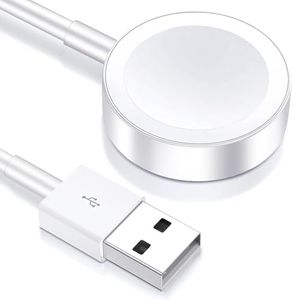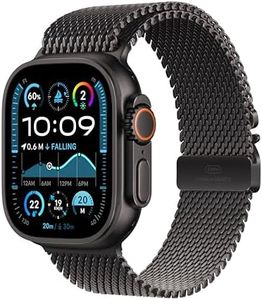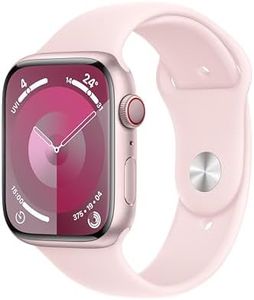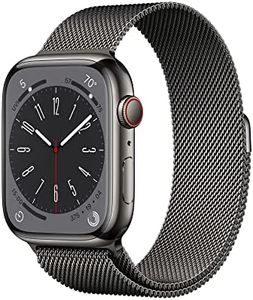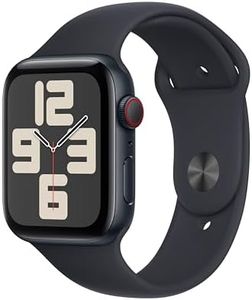We Use CookiesWe use cookies to enhance the security, performance,
functionality and for analytical and promotional activities. By continuing to browse this site you
are agreeing to our privacy policy
10 Best Apple Watches
From leading brands and best sellers available on the web.Buying Guide for the Best Apple Watches
Choosing an Apple Watch is about understanding your lifestyle and what you expect from a smartwatch. Whether you want an everyday companion for notifications and calls, a fitness tracker, or a health-focused device, focusing on the key features that matter most to you will help you select the best fit. It's important to think about how you'll use the watch: for sports, managing your day, monitoring health, or all of the above. Understanding these needs will make your buying decision much easier.Case SizeCase size refers to the measurement (in millimeters) of the watch's height along your wrist, usually expressed as two numbers. The importance of case size is not just about looks—it's about comfort, usability, and display clarity. Smaller sizes tend to look better and feel lighter on slim wrists, while larger ones have bigger screens for easier reading and more space for apps and notifications. If you prefer lightweight, less noticeable watches, or have a smaller wrist, go for the smaller size. If you want a larger display or have a bigger wrist, choose the bigger size. Try one on if possible or measure your wrist to help decide.
Display TypeThe display type mainly distinguishes between standard and always-on screens. An always-on display means your watch face stays visible without needing to raise your wrist, making it easier to check time and information discreetly. Standard displays turn on only when you interact with the watch. Always-on is great for those who don't want to fuss with wrist movements, especially during workouts or meetings. But it can use more battery. Consider how important instant visibility is for your daily use.
Cellular vs. GPS OnlySome Apple Watches have cellular connectivity, meaning they can make calls, send texts, and use apps over a mobile network even when your phone isn’t nearby, while GPS only watches need your phone for these features. Cellular models are ideal if you want full freedom from your phone—like leaving it behind on a run or at the gym. GPS-only is enough if you always keep your phone nearby and don’t need standalone features.
Health and Fitness FeaturesApple Watches offer various health tools like heart rate monitoring, ECG readings, blood oxygen measurement, and advanced fitness tracking. More advanced models tend to offer more health sensors and fitness metrics. Decide what's important for your needs: basic heart tracking and activity rings may be enough for casual fitness, while features like ECG, blood oxygen, and fall detection could matter if you're health-conscious or want added peace of mind.
Durability and Water ResistanceDurability refers to how well the watch can handle impacts, scratches, and exposure to elements, while water resistance defines how safe the watch is in water (like splashes, swimming, or even diving). Higher durability and water resistance is essential if you plan on rough outdoor activities or frequent swimming; more basic levels are sufficient for general use and occasional rain.
Battery LifeBattery life tells you how long the watch can run on a single charge. Generally, Apple Watches last about a day, but some models focus on longer battery for multi-day use. If you travel, do long workouts, or just hate daily charging, a longer battery may be important. If you don’t mind charging each night, this may be less of a concern.
Band and Customization OptionsApple Watches have interchangeable bands and customizable faces, letting you match your personal style or needs—whether that's sporty, professional, or casual. When picking a watch, think about how you might want to swap bands or personalize the look for different situations. If you want versatility in your style or comfort, make sure the model you pick supports easy band changes.
